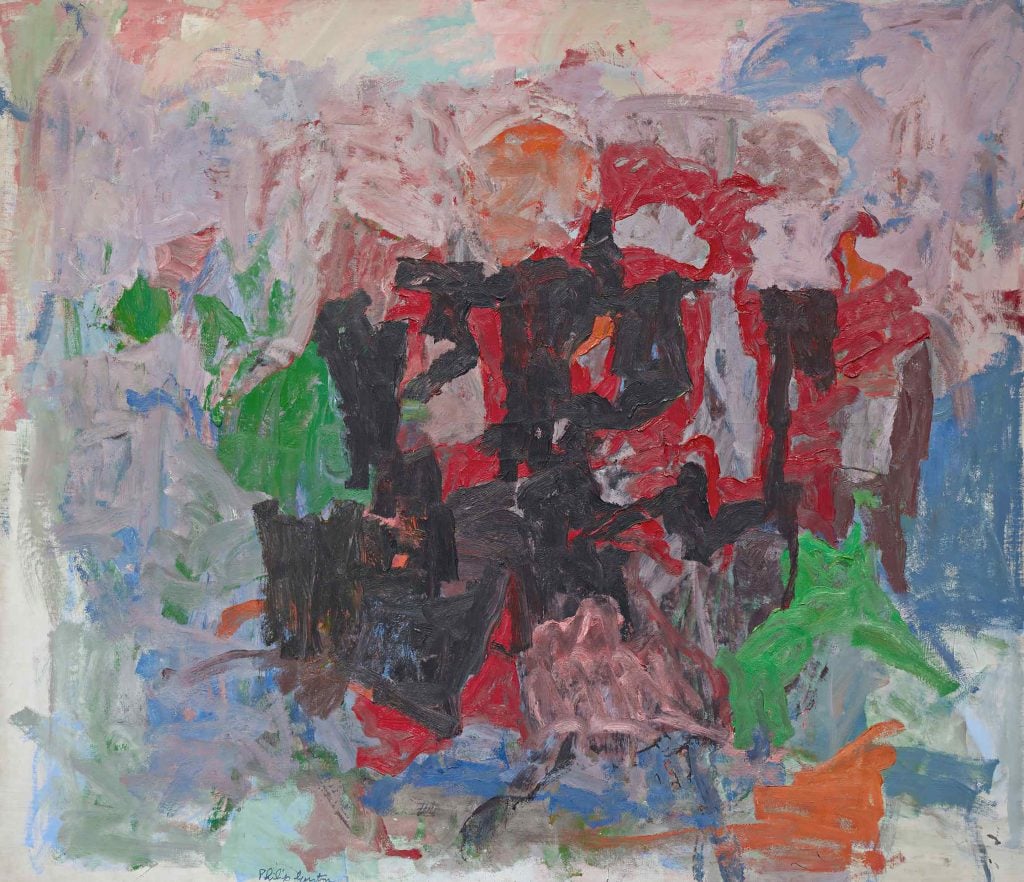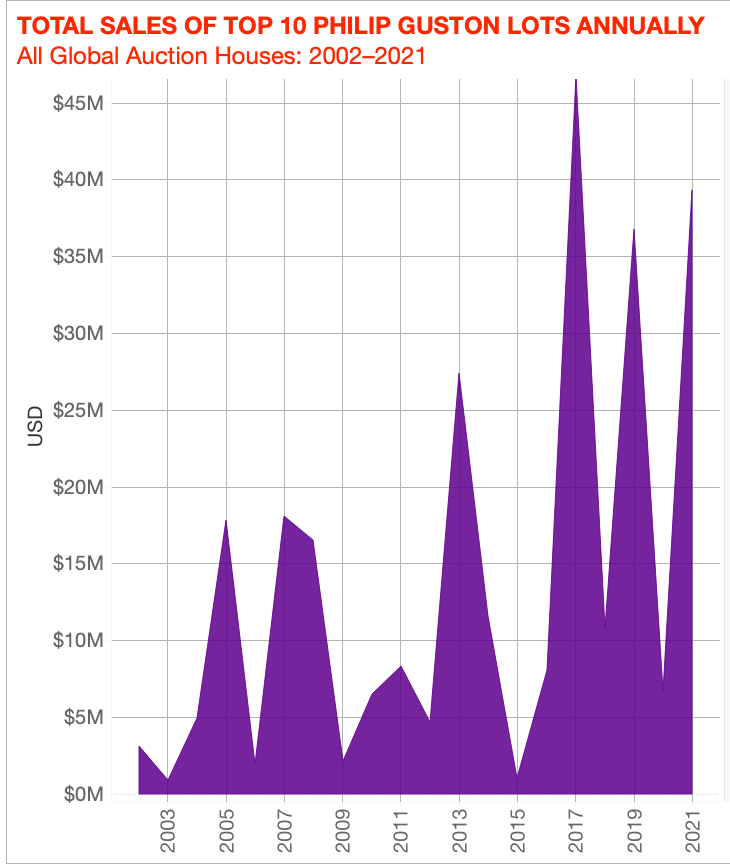The Appraisal
Will the Contentious Opening of a Philip Guston Show Hurt or Help the Artist’s Market? We Parsed the Auction Data to Find Out
Is it high time the artist's market catches up to his Ab-Ex contemporaries?

Is it high time the artist's market catches up to his Ab-Ex contemporaries?

Naomi Rea

Last week, Sotheby’s announced that it would offer a resplendent Philip Guston abstraction during its Modern art evening sale in New York next month. The painting, which has been in the same collection for four decades, carries the highest estimate ever set for a Guston work, $20 million to $30 million, which means it could break the artist’s existing record of $25.9 million, set in 2013.
The event will coincide with another momentous occasion for Guston’s work: the opening of a long-awaited retrospective at the Museum of Fine Arts Boston on May 1. “Philip Guston Now,” which will go on to tour to the National Gallery of Art in Washington, D.C., the Museum of Fine Arts Houston, and Tate Modern in London, was controversially postponed in 2020, amid fears from organizers that the public might object to some of Guston’s depictions of the Ku Klux Klan.
Two years on, has the controversy helped or harmed Guston’s market? We took to Artnet’s Price Database to investigate.
Auction Record: $25.9 million, achieved at Christie’s New York in May 2013
Guston’s Performance in 2021
Lots sold: 27
Bought in: 3
Sell-through rate: 90 percent
Average sale price: $1.5 million
Mean estimate: $765,356
Total sales: $39.4 million
Top painting price: $24.4 million
Lowest painting price: $312,500
Lowest overall price: $1,800, for a screenprint on plexiglass, part of an edition of 125.

© 2022 Artnet Worldwide Corporation.
Guston’s work has never reached the high watermarks of his Abstract Expressionist contemporaries such as Willem de Kooning, Mark Rothko, and Jackson Pollock. (The latter’s auction record is more than double Guston’s, at $61.2 million). But a change has been brewing in the market for a while.
There has been a surge of interest in Guston’s oeuvre from a new generation of collectors in recent years, which has been helped along by the global headlines surrounding his upcoming retrospective, as well as the concerted promotional efforts of his gallery, Hauser and Wirth. These younger collectors know him best for his more politically-engaged figurative works, which reflect his progressive values and social conscience. Meanwhile, collectors in Asia, who seem to be holding all the market cards these days, are seeking Guston work from across the artist’s career.
The work hitting the block at Sotheby’s is being offered from the esteemed collection of Dallas-based philanthropists Peter and Edith O’Donnell, and is being sold to raise money for the late collectors’ charitable organization. Even outside of the solid provenance and philanthropic element, the work is well-placed to sell for a high price. It is a rare-to-market example of Guston’s abstract work, which has been consistently popular with older, more established collectors who understand Guston as a modern master—and might be easier to hang in their salons than some of his more challenging figuration.